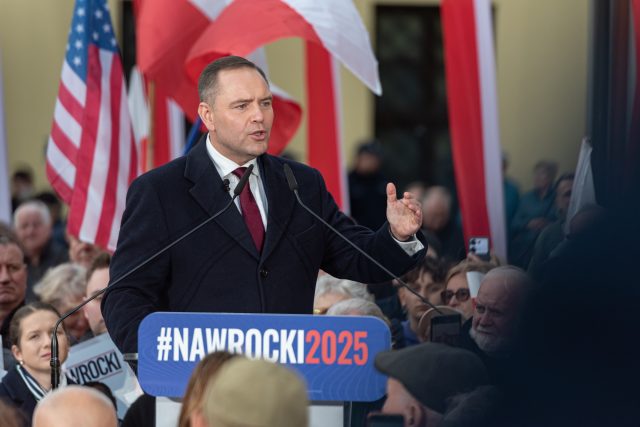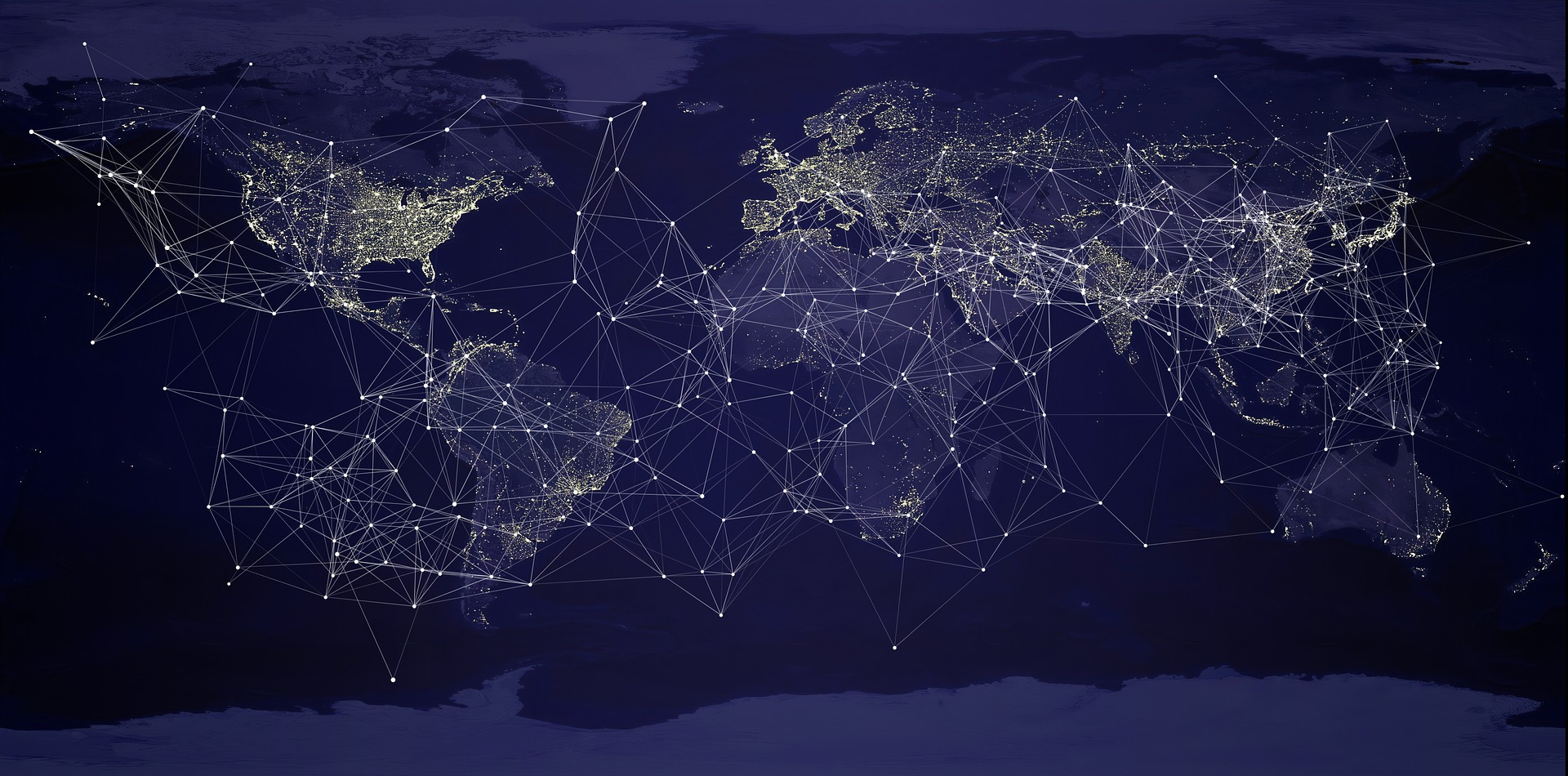
Ukrainian refugees have become the focus of attention for the new leadership in Warsaw. President Karol Nawrocki is putting Poland first, which is why he has proposed restricting social assistance for Ukrainian refugees and blocking funding for the Starlink network used in the conflict with Russia.
The recent decision by Poland’s new president, Karol Nawrocki, to make Ukrainian refugees’ access to financial support and medical services paid for from the national budget conditional has sparked intense debate both within the country and on the European stage. The conservative president, who took office in June after a campaign marked by speeches announcing that he would put Poland first, said on Monday, August 25, that he intends to limit family allowances and medical assistance for Ukrainian citizens who do not work on Polish territory. At the same time, Karol Nawrocki rejected a law by which Prime Minister Donald Tusk’s government wanted to extend the payment of the subscription for the Starlink network for Ukraine, a vital network used in particular in the use of drones by the Kiev army in the war with Russia.
A change of tone from previous policy
Since the beginning of the Russian invasion in February 2022, Poland has been considered one of Ukraine’s most important allies, both through military support and social assistance for the millions of people who fled the war and took refuge on Polish territory. During the three years of conflict, the authorities in Warsaw have facilitated access to schools, hospitals, and social programs for refugees, and there was initially an impressive wave of solidarity among the population. However, after more than three years of conflict, things have changed. The fatigue generated by the high number of Ukrainians settled in Poland, at least 1.5 million according to official estimates, began to be felt by ordinary citizens, and nationalist rhetoric gained more and more traction with the public. During the election campaign, Nawrocki promised to “put Poland first,” a phrase that became his leitmotif and convinced a significant portion of the conservative electorate to vote for him. The new political line contrasts sharply with that of former President Andrzej Duda, who, although coming from the same ideological background, was much more vocal in his support for Kiev and avoided making social benefits for Ukrainian refugees conditional.
Nawrocki’s statements and their immediate effects
“I believe that financial aid for families should be directed exclusively to those who work and contribute to our economy. We cannot maintain a system that offers unlimited benefits to people who make no effort to integrate,” Nawrocki said at a press conference.
According to the plans of Poland’s new president, only employed Ukrainians would be entitled to child benefits and extended access to the Polish healthcare system. Currently, Ukrainian families who enroll their children in Polish schools can receive a monthly allowance of 800 zlotys (approximately $219) for each child. This measure, adopted in 2022 by the Polish government, was intended to encourage the integration of Ukrainian minors into the education system and provide minimal financial security for refugees. The limitation proposed by President Nawrocki would significantly reduce the number of beneficiaries. The Ukrainian Foreign Ministry has not officially commented on Nawrocki’s initiative, but diplomatic sources quoted by the Kiev press have suggested that the measure could further strain bilateral relations, already marked by historical disagreements such as the massacres in Volhynia during World War II.
Blocking payment for Starlink subscription, a new source of diplomatic conflict between Poland and Ukraine
While the reduction in allowances sparked heated debate, the real surprise was President Nawrocki’s decision to veto a law that would have secured funding for Ukraine’s access to the Starlink satellite network, owned by American billionaire Elon Musk. The communications system developed by SpaceX has become essential for the Ukrainian army in its conflict with the Russian Federation. Through tens of thousands of terminals, the leadership in Kiev has been able to maintain contact between military units on the front lines, coordinate operations, and use drones despite Russian attacks on ground telecommunications infrastructure, which has been largely destroyed. By April 2024, Ukraine had received over 50,000 such terminals, funded by a mix of international donations, its own purchases, and direct support from European governments, including Poland. Without an extension of the subscription payment, starting October the 1st, the government in Kiev risks losing access to the Starlink network, with major effects on the front line. A spokesperson for the Polish Ministry of Digital Affairs explained that, with the presidential veto, “there is no longer a legal basis for continuing funding.” However, the same government source mentioned that the new bill proposed by the president could once again include provisions regarding the financing of Starlink network subscriptions, with the main condition being that the Polish Parliament adopts the new bill proposed by Nawrocki.

For those unfamiliar, Starlink is a massive constellation of low-Earth orbit (LEO) satellites operated by SpaceX. The satellite network was designed for low-latency broadband internet, including in areas without terrestrial infrastructure. The network continued to expand in 2025, with thousands of active satellites in orbit, strengthening global coverage and total system capacity. Starlink provides global coverage both on land and at sea, with fixed and mobile plans. The company’s official website allows users to check service availability on a map, and the “Global Priority” plans are explicitly intended for worldwide and maritime use. In sensitive areas, access may be geofenced/restricted at the service policy level. For example, the Crimea region has had restrictions. Ukrainian military forces widely use Starlink terminals for data links between command posts, frontline units, and sensors (imaging, reconnaissance), as well as for real-time coordination of military actions. The importance became apparent when a global Starlink outage (July 2025) disrupted Ukrainian military communications and video feeds for approximately 2 hours, leading to the postponement of some missions. Ukrainian platforms such as Magura V5 are reported to be equipped with Starlink terminals, using satellite backhaul for telemetry, navigation, and video in long-range strike or reconnaissance missions. This model supported the success of the Ukrainian campaign in the Black Sea area. For multicopters/short-range tactics, direct control is usually done via radio (not satellite), but Starlink is used as the data “backbone” for mobile command centers (video feed return, coordinate/target uploading, unit synchronization). Analyses by independent sources and think-tank reports highlight Starlink’s role in maintaining communications redundancy in the face of jamming by the Russian Federation’s military.
A question on everyone’s lips: what could happen if Ukraine loses access to Starlink?
Well, without satellite backhaul, cohesion between tactical and operational levels (command and control) quickly disappears, and video feeds from drones and reconnaissance teams are severely limited. Let us recall once again the incident in July 2025, which showed that even a few hours’ interruption causes disruptions in Ukrainian military actions (delayed missions, return to degraded procedures). USVs using high-volume bidirectional data (video, live telemetry) would have reduced performance or suspended missions until switching to alternative solutions, which would likely lead to a decrease in range and accuracy. Without a robust satcom layer, frontline units revert to radio links or improvised terrestrial networks, which are more exposed to jamming, have higher latency, and reduced capacity, slowing down the “detect–decide–engage” cycle. Without the Starlink network, there could be a decline in drone efficiency, especially for operations beyond the horizon/in depth, and a dilution of the information advantage that has allowed Ukraine to synchronize its artillery with real-time reconnaissance. Analyses by security and media experts have called a possible loss of Starlink a “game changer” in Russia’s favor. If Poland stops funding Starlink subscriptions, Ukraine would be forced to accelerate its migration to other satcom providers (e.g., European or commercial non-SpaceX solutions) and terrestrial networks (microwave, tactical 4G/5G, radio mesh), but none of these offer the same terminal density, bandwidth, and low latency on a national scale in the short term, especially on the front line. Without Starlink, the Ukrainian military’s decision-making speed will decrease, and its long-range strike capabilities will decline. Alternatives exist, but they cannot quickly match the scale and performance of the Starlink satellite network.
The rivalry between Nawrocki and Tusk, regional impact and echoes in Romania
The decision cannot be understood outside the domestic political context. The current government, led by pro-European liberal Donald Tusk, is in open conflict with President Nawrocki. While Tusk is trying to maintain a balance between supporting Ukraine and protecting Polish interests, Nawrocki is taking a more critical stance towards Kiev, which is closer to the conservative electorate. The blocking of the law on Starlink and social assistance therefore also has an internal political dimension. Conservatives around the president want to show that they can impose a nationalist agenda even in the face of the liberal government, which heralds months of institutional tension.
The measures announced in Warsaw quickly resonated across the border. George Simion, leader of Romania’s AUR party, used the example of the Polish president to criticize the situation of Ukrainian refugees in Romania. In a message posted on social media, George Simion stated that “Romanians are becoming poorer, while Ukrainians retain their privileges and social benefits, thanks to the complicity of the ruling parties.” His statements are part of a broader rhetoric of the AUR party, which often promotes anti-immigration and nationalist messages. Recently, a member of parliament from the party urged citizens to refuse orders from companies that hire foreign workers, especially workers from Asian countries, generating harsh criticism and accusations of discrimination from Romanian civil society.
Between solidarity with the Ukrainian people and nationalism
The situation of Ukrainian refugees in Poland and other European Union countries illustrates the dilemma facing European governments: how to maintain solidarity with the victims of a devastating war without fueling internal resentment and putting excessive pressure on social systems. In Poland, where history has left deep scars and where society is already polarized between conservatives and liberals, Karol Nawrocki’s decisions could redefine the direction of foreign and domestic policy for years to come. If the proposed restrictions are implemented, they could change the way Poland’s role as Ukraine’s main ally is perceived. At the same time, they could fuel populist rhetoric in other countries, including Romania, where echoes are already being heard. The decisions of the new Polish president mark a visible paradigm shift. From a state that has assumed the role of a bastion of support for Kiev, Poland could become a much more reserved country, concerned primarily with its own internal tensions and the protection of its national resources and citizens. In this context, relations with Ukraine, but also with European partners, are likely to become increasingly complicated in the coming period.



 Subscribe
Subscribe